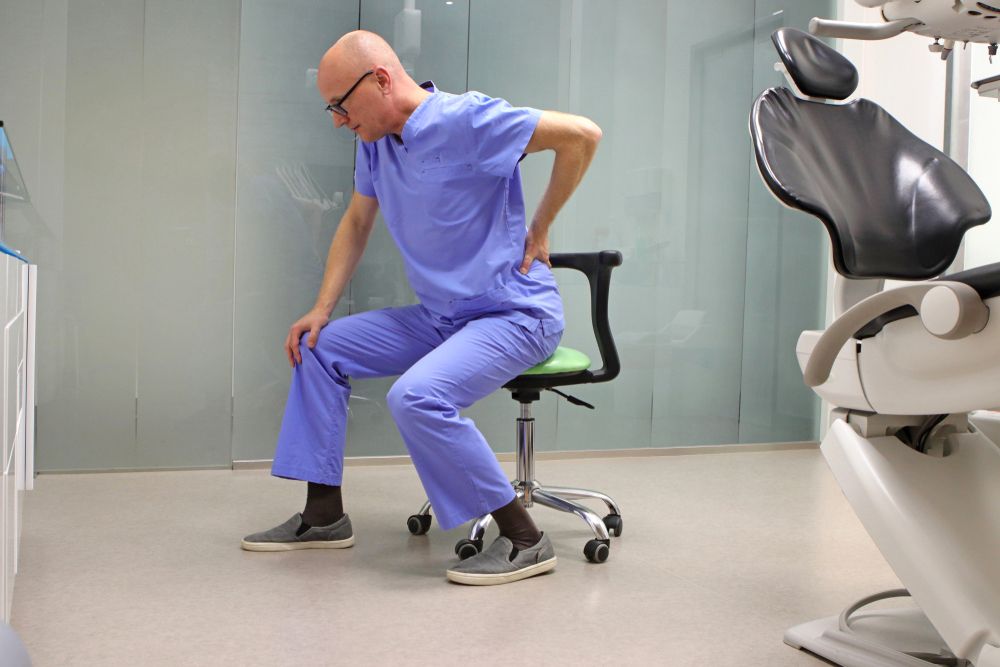Back pain affects many general dental professionals. The symptoms can affect mood and may provoke frustration and anxiety. If the problem is severe or prolonged, it can have a significant impact on quality of life.
The health and wellbeing of dental nurses and other members of the dental team are often overlooked during training and at work. By incorporating good practice into the daily work routine and general lifestyle, the impact of back pain can be reduced and quality of life improve
General back pain advice
The current National Institute for Health and Care Excellence (NICE) guidelines on low back pain are available online and are worth a look (NICE, 2009).
Causes of back pain
In most cases, it is not possible to pinpoint the exact cause of the pain, but is often associated with muscles, ligaments and joints not moving and working as they should, hence it is a ‘dysfunction’ rather than pathology. Very few people with back pain have a slipped disc or a trapped nerve.
Back pain may be considered as having more features in common with temporomandibular dysfunction rather than dental caries. Although the pain of both of these conditions can cause concern, the treatment and management is very different.
Stress
Stress increases pain and pain increases stress. Tension can cause muscle spasm and the muscles themselves can become painful.
Working in dentistry can be mentally and emotionally challenging. Presenting a calm and reassuring appearance for patients and hiding your own problems is part of the daily work experience for many dental nurses.
Posture and positioning
All members of a dental team should be encouraged to attend courses on related subjects—such as close support dentistry—in order to improve working practices and relationships. This will contribute to a healthier workplace in the long term.
The seat and the surgery layout should allow the nurse to dentist and sit as close to the patient as possible in order to reduce bending the back. Both feet should be flat on the floor. Hips should be slightly higher than the knees.
Good posture does not replace the need of a body to be physically conditioned, i.e. one which has good flexibility, strength and control of movement.
Do the opposite movement
Typically, when the dentist is right handed, the dental nurse will work on the left side of the chair in a posture involving leaning forward, bending to the left and rotating to the right (the dentist would be bending to the right and rotating to the left on the other side of the chair). Years of working in these positions results in asymmetries in the spinal muscles and a loss of mobility when attempting to do the opposite movement. The dentist and nurse may find they are a mirror image of each other, lacking the ability to turn the head or back fully to their non-habitual side.
Therefore, it is recommended to do just that on a regular basis—for example, rotate to the other side in a gentle stretch when the opportunity arises, such as when the patient is rinsing.
Seek professional help
If back pain is causing problems, then seeing an appropriately qualified professional can be very helpful.
Dental professionals often sit down for long periods of time, which strains the back, the gluteus muscles, as well as the legs and the core. This will all be worked if compound movements such as squats are implemented.
In conclusion, musculoskeletal pain is a definite issue with a high risk, physically demanding career such as dentistry. With the introduction of stretching, relaxation techniques, correct posture, weight training, resistance and aerobic training, dental professionals can reduce the risk of chronic musculoskeletal pain.
